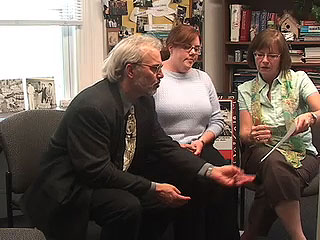



Learning Prep: Challenges
West Newton, Massachusetts
One of the challenges which teachers face is how to present information that can be processed successfully by students, particularly those who are categorized as special needs. Perhaps the most abstruse task for learning disabled students to execute is making connections with content in textbooks. Texts are not organized for the learning disabled; any student who is a passive learner, or one who "lack[s] skills for processing and organizing written and oral information" (DiCecco and Gleason, 2002, 306), requires explicit instruction and assistance with "making inferences, understanding relationships and connections, distinguishing main ideas from significant details, and understanding the gist of the passage" (DiCecco and Gleason, 2002, 306).
Students typically read a chapter and answer comprehension questions relating to that chapter. Rarely are they given guidance or strategies on how to "decipher text structure and interpret information" ('DiCecco and Gleason, 2002, 306). Learning disabled students need a repertoire of strategies, coupled with explicit instruction, to assist with the comprehension of information.

Interview with (left to right) Aaron Campbell (work experience dept head); Tara Howe (work study dept head); Lois Gould (work study and transition coordinator).
![]() Watch the video clip in Quicktime (15:28)
Watch the video clip in Quicktime (15:28)
Ciardello writes that, in 1999, an Adolescent Literacy Commission established by the International Reading Association announced that a study they conducted found students lacking in reading skills, including comprehension, summarization, and conceptualization. The commission recommended all middle school and high school teachers teach comprehension across the curriculum. Social studies specifically posed the most significant challenge, due to the abstract method in which complex information is presented in history textbooks. Students are not able to independently read and process a typical social studies textbook, as they have difficulty comprehending the generalized, conceptual patterns of text structure. Consequently, students perceive history to be a collection of non-related events and facts; because of insufficient comprehension, they cannot establish connections between these events and facts (2002, 31). The most common-albeit problematictext structure patterns in textbooks which have emerged are "hierarchical, time order, causeleffect, description, and comparison/contrast"; according to Ciardiello, these five thinking processes pose the most significant obstacle to adolescent students (2002, 31).
Download the Improving Reading Comprehension Through Visual Tools Thesis by Cynthia Manning
- Thesis Summary (pdf file)
- Complete Thesis (pdf file)